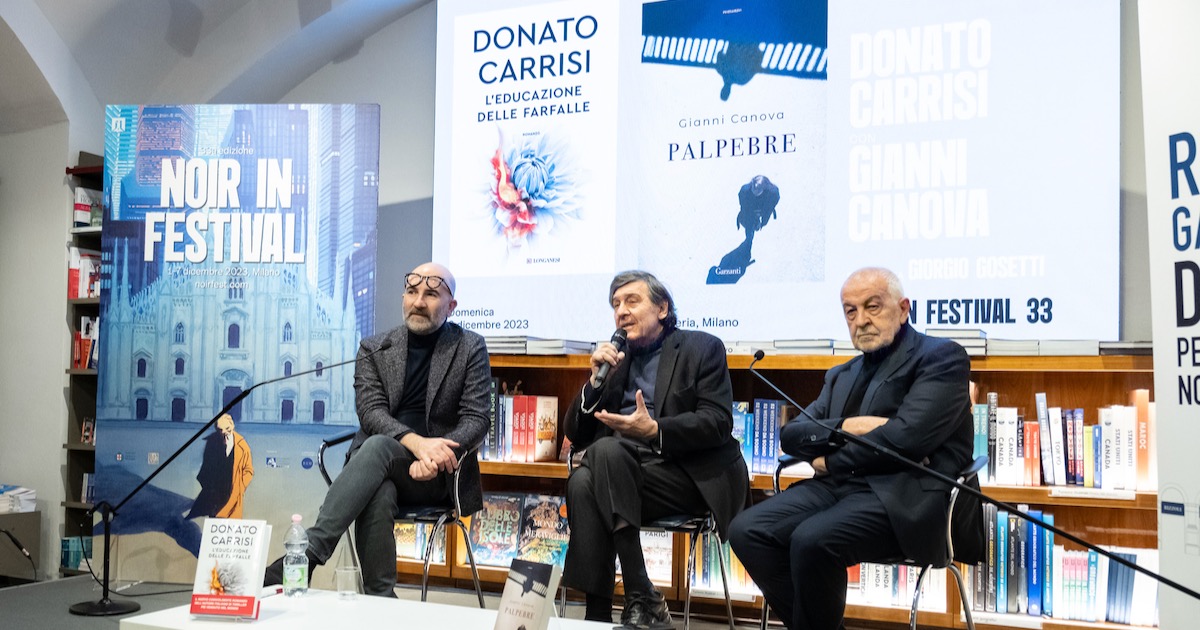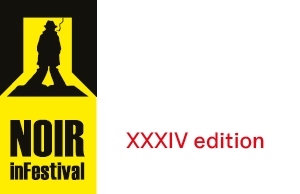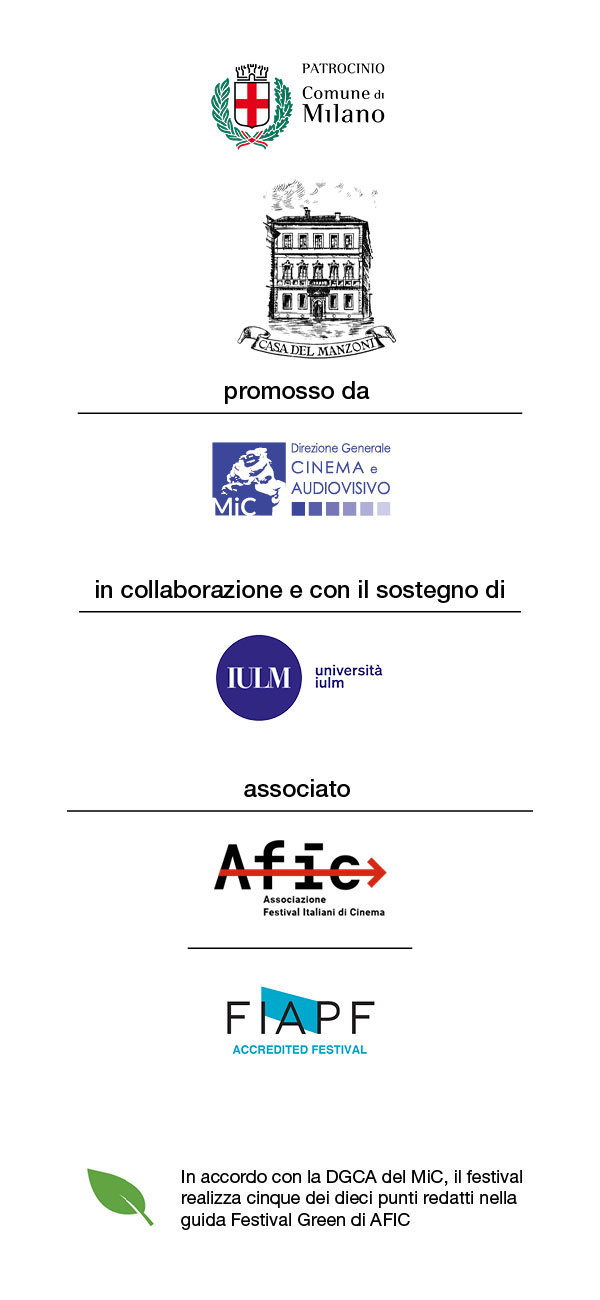Donato Carrisi and Gianni Canova present their novels, L’educazione delle farfalle and Palpebre, respectively. An article by Cristina Diaferia

What is the secret recipe of noir fiction at its best? Donato Carrisi and Gianni Canova, who get double billing in a single interview with Giorgio Gosetti, shared their thoughts on what makes a noir a noir and where the genre stands on the contemporary literary and film scenes.
“Literature needs to accommodate people’s most hidden instincts,” claims Carrisi, whose new novel, L’educazione delle farfalle, has just come out, a sort of descent into the obsessions generated by the human mind. The author from Puglia construes the noir novel as a useful tool for exorcising the darkest impulses that each of us harbors inside, thus creating “a short circuit between horror and compassion” which is the genesis of a story.
Carrisi’s novel, opines Gianni Canova, “performs a striptease on itself”: Canova aptly alludes to the masterful exercise in style that his colleague pulls off in his latest thriller. Palpebre, as well – back in bookstores in a reissue published by Garzanti – shows its author Canova probing the dark side of human nature, starting with the fascination with evil that is a hallmark of contemporary society. Indeed, the spectacularization of death and suffering is clearly trending in our lives today for various reasons, one being the influence of the exposure crimes large and small are treated to in the media. Fertile terrain for media coverage of all kinds, the narrative of crime degenerates into a “pornography of suffering” through which individuals become inured to the pain of others.
As for the centrality of the author’s gaze in the creation of fiction, the two writers agree: “we are voyeurs,” says Carrisi, highlighting that power of observation that distinguishes writers in general. “Hell lies in this imperative to look and gaze steadily at the horror around us,” adds Canova, whose novel is a meditation on the weight of eyelids themselves and the importance of one’s gaze on the world.
It would seem that the horrific visions of modern times serve as a springboard for the noir genre, which so ably blends fiction and real life. As for the future of the crime genre, both writers concur: a troubling change holds dangers for noir fiction, as the latter veers towards the grotesque, in Carrisi’s view, while in Canova’s it is losing the very idea of the genre. As the latter puts it, “there is no longer a collective drive, sociologically and morally speaking”.
In any case, the downward trend pinpointed by the two interviewees certainly does not spell doom for the genre. What’s changing is the way the novels work, and the author’s gaze needs to change accordingly. The writer needs to overcome that typical habit of thought of the modern day and seek out new art forms, just as a mediator must identify new pupils that can observe stories in different ways. From this point of view, both authors agree that dialogue is essential; comparing our ideas with those of others allows us to better understand our own vision.
Regarding the creativity that is required of contemporary writers, Carrisi concludes by placing the class of artists to which he himself belongs in a “narrative flow”. It is important to recount a part of the flow, he claims, and not necessarily decide the direction the stream takes.


